
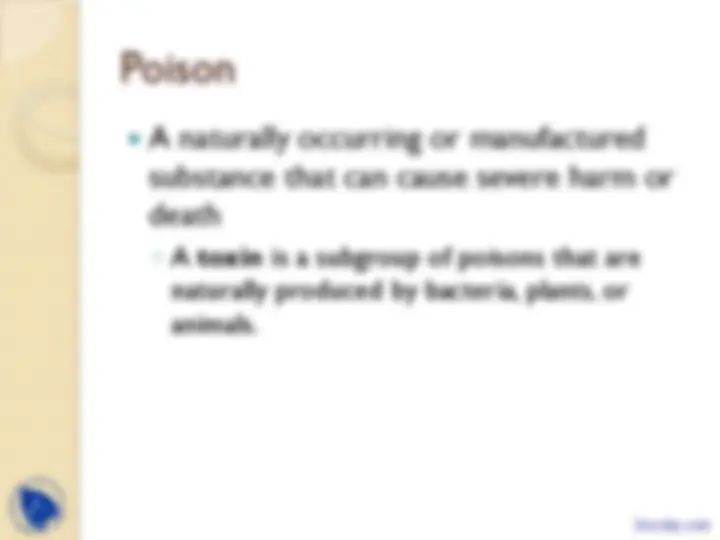
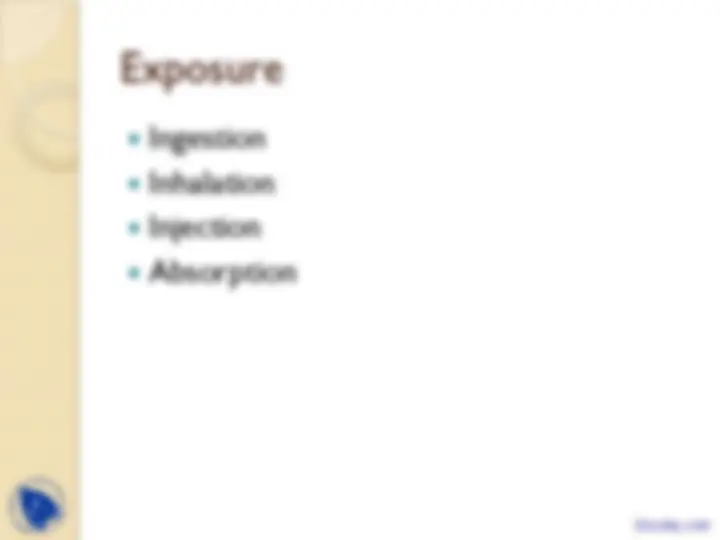
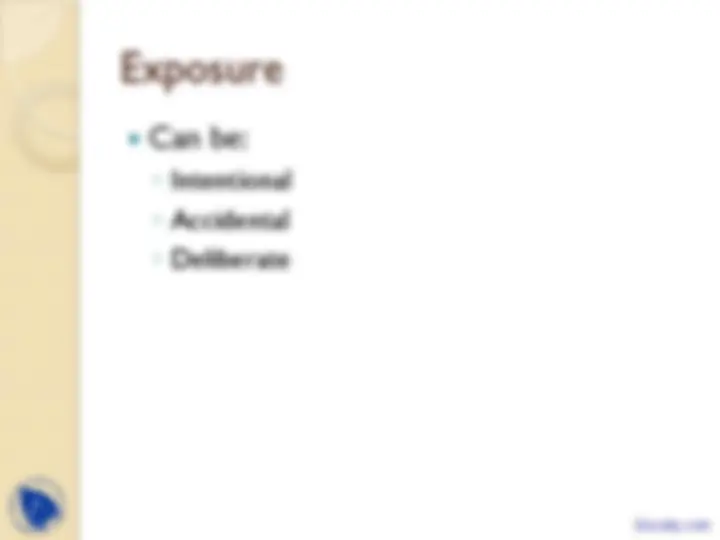
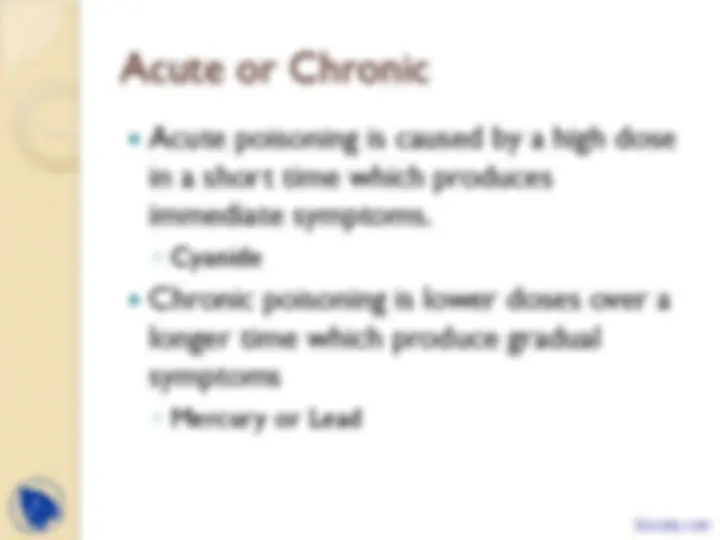
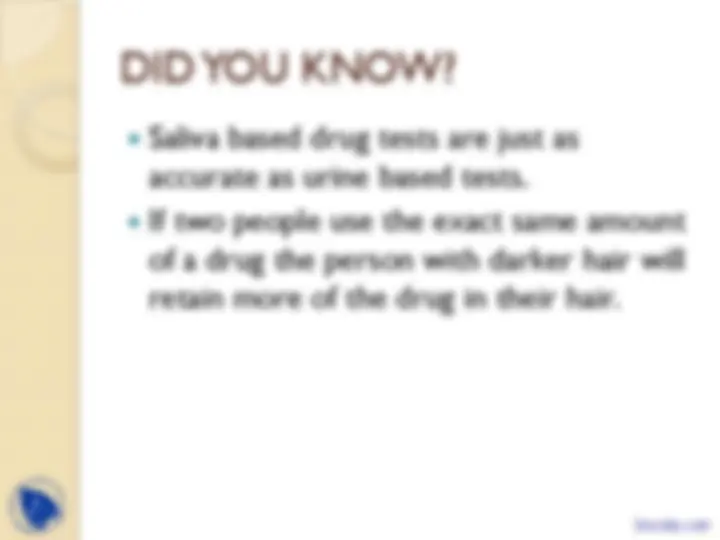
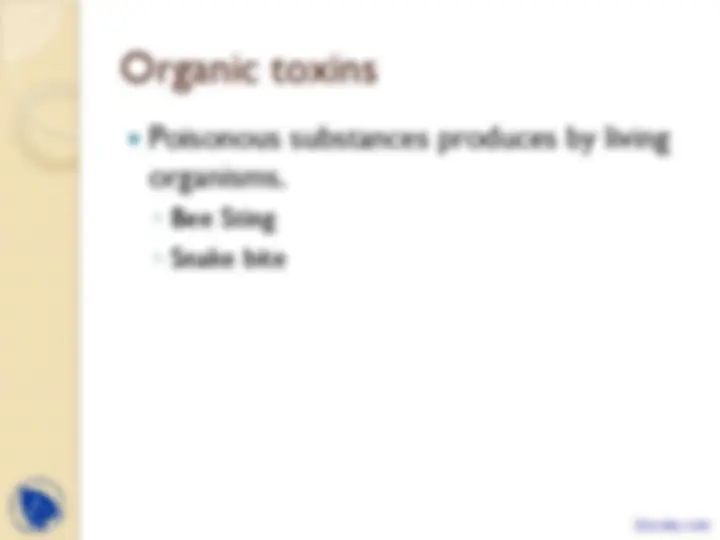
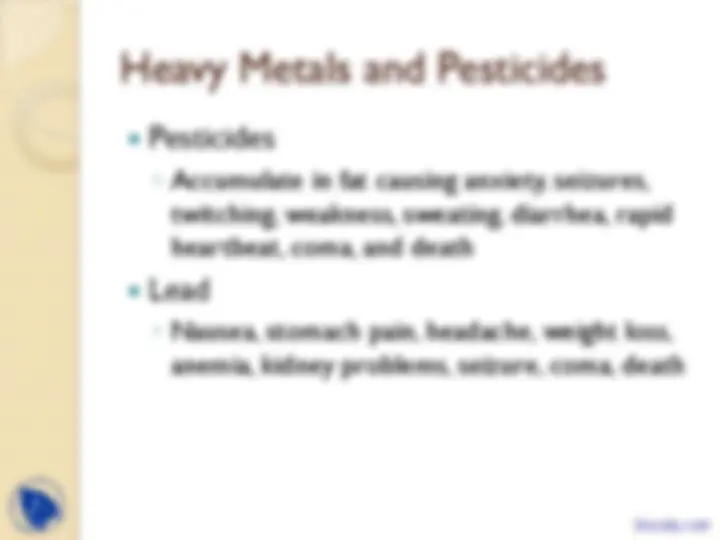
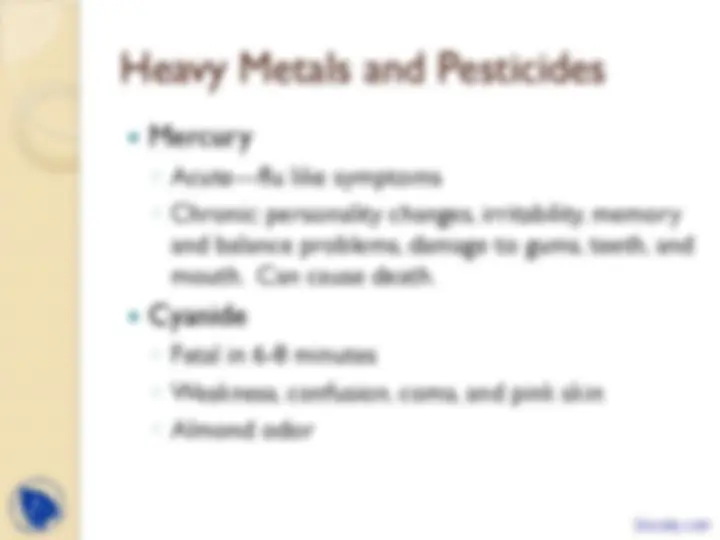
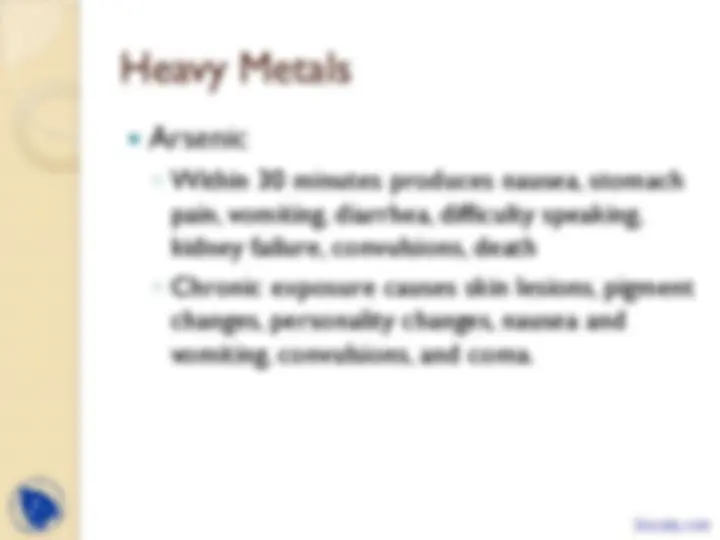
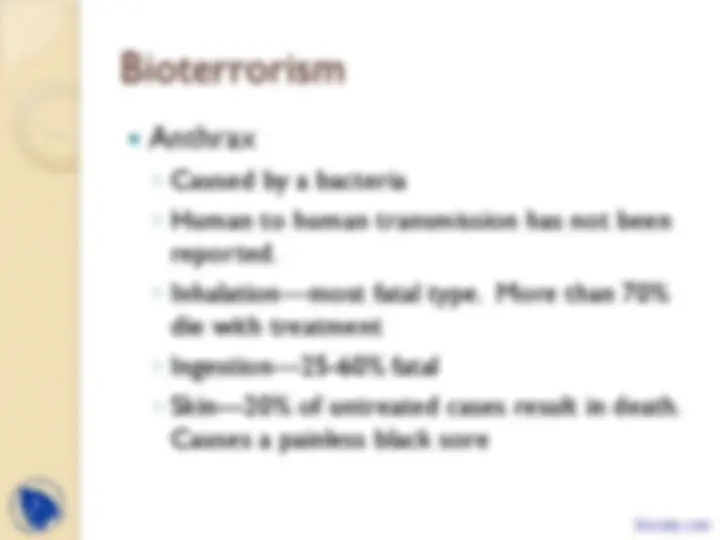
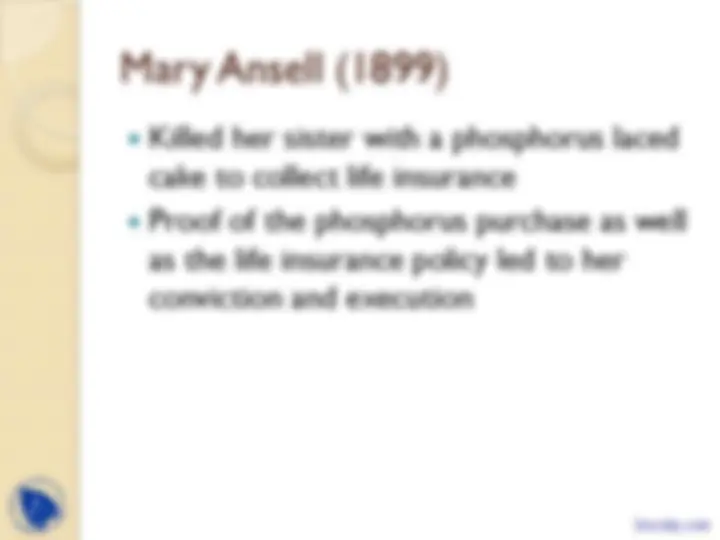
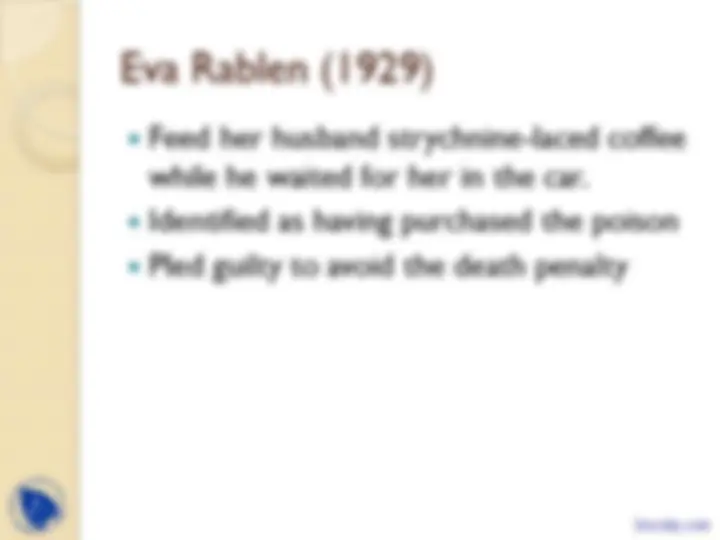
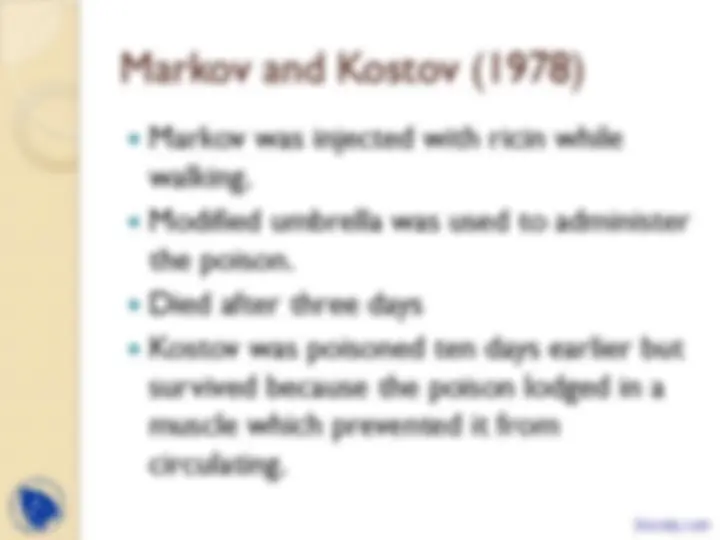
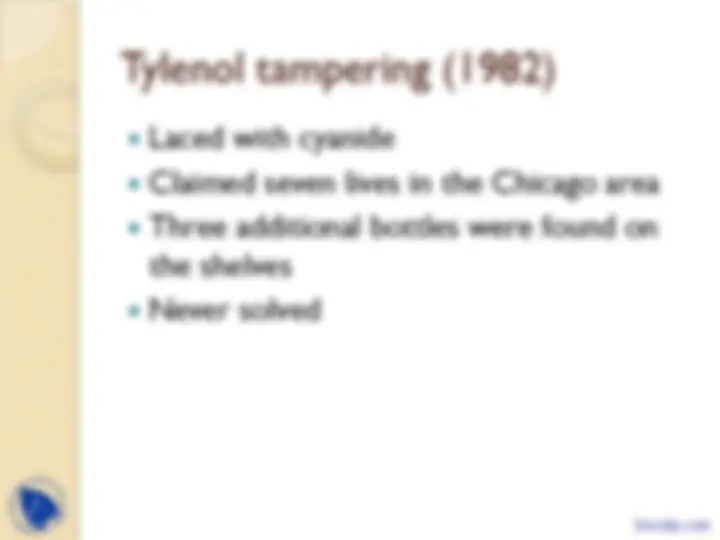



Study with the several resources on Docsity

Earn points by helping other students or get them with a premium plan


Prepare for your exams
Study with the several resources on Docsity

Earn points to download
Earn points by helping other students or get them with a premium plan
Community
Ask the community for help and clear up your study doubts
Discover the best universities in your country according to Docsity users
Free resources
Download our free guides on studying techniques, anxiety management strategies, and thesis advice from Docsity tutors
Forensic science (often shortened to forensics) is the application of a broad spectrum of sciences and technologies to investigate and establish facts of interest in relation to criminal or civil law. This lecture includes: Toxicology, Study of Poisons, Medicinal, Recreational, Subgroup of Poisons, Ingestion, Inhalation, Injection, Absorption, Intentional
Typology: Slides
1 / 23

This page cannot be seen from the preview
Don't miss anything!
















◦ Intentional ◦ Accidental ◦ Deliberate
◦ Cyanide
◦ Mercury or Lead
◦ Bee Sting ◦ Snake bite
◦ Most poisonous biological agent known ◦ Neurotoxin that paralyzes muscles ◦ Toxic in small amounts ◦ If caught early an antitoxin is available ◦ From contaminated food or bacterial spores ◦ Current uses????
◦ Accumulate in fat causing anxiety, seizures, twitching, weakness, sweating, diarrhea, rapid heartbeat, coma, and death
◦ Nausea, stomach pain, headache, weight loss, anemia, kidney problems, seizure, coma, death
◦ Acute---flu like symptoms ◦ Chronic: personality changes, irritability, memory and balance problems, damage to gums, teeth, and mouth. Can cause death.
◦ Fatal in 6-8 minutes ◦ Weakness, confusion, coma, and pink skin ◦ Almond odor
◦ Spasms, increased temperature, convulsions, and rigor mortis within minutes.
◦ Results from production of castor oil. ◦ Tiny amount can be fatal ◦ Can be inhaled, ingested, or injected ◦ Prevents cells from making proteins which causes cell death ◦ Symptoms appear 6-8 hours later. Fever, cough, nausea, vomiting, bloody urine, low blood pressure, hallucinations, convulsions, death